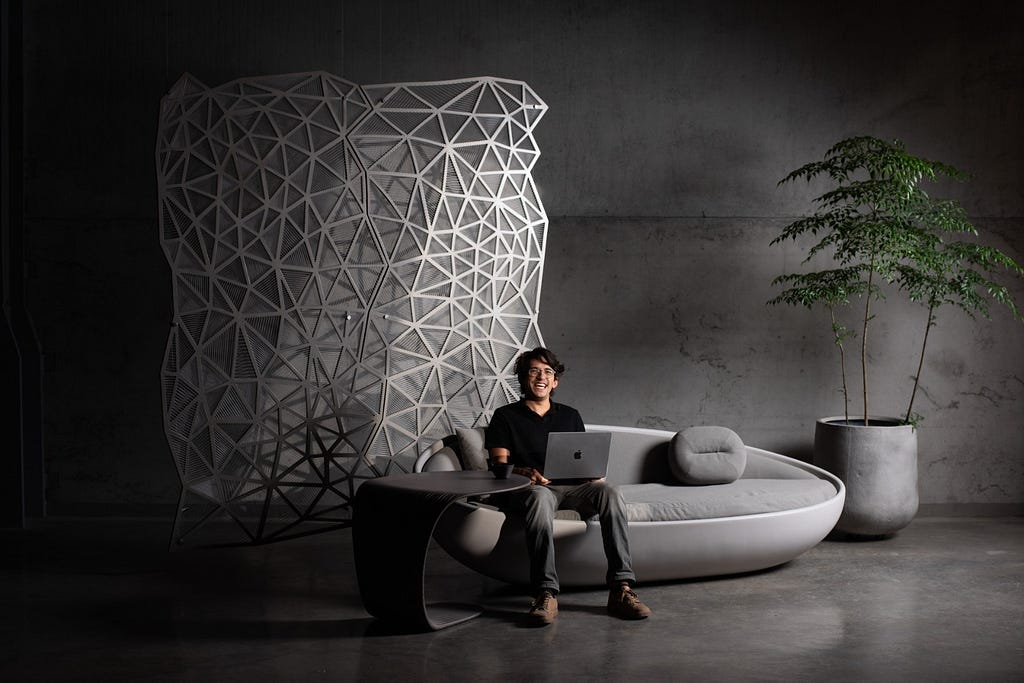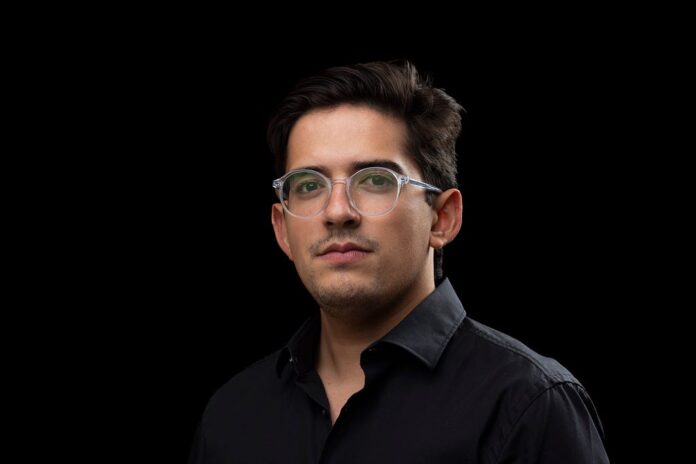An Interview With Eden Gold
Mental Health and Balance: This generation is rejecting burnout culture. I’ve learned that real productivity comes from balance — sleep, nature, art, workout, human connection — not 80-hour weeks.
In a world rapidly changing through technology, societal norms, and global challenges, a new generation of leaders is emerging. Ambitious young adults are not just aiming for traditional markers of success; they are redefining what it means to be successful. Beyond the corporate ladder and financial milestones, they prioritize impact, sustainability, and personal fulfillment. They are entrepreneurs, activists, scientists, and artists who are shaping the future with innovative ideas and actions. As part of this series, we had the pleasure of interviewing Pietro Estrada.
Pietro Estrada is a principal designer and part of the creative force behind Piegatto, a contemporary luxury furniture brand based in Guatemala with international reach. A trained architect with an MBA, Pietro blends design thinking with business strategy to craft high-tech, emotionally resonant pieces that are redefining the boundaries between art and function.
Thank you so much for joining us in this interview series. Before we dive into our discussion about Future Leaders, our readers would love to “get to know you” a bit better. Can you share with us the backstory about what brought you to your specific career path?
Coming from a family of architects, creativity was always part of the atmosphere. I grew up surrounded by design conversations, art, and the kind of curiosity that constantly asked why not do it differently? That early exposure shaped my path toward architecture — but I never saw it as the end point.
After finishing architecture school, I pursued an MBA — not to pivot away from design, but to expand its impact. I wanted to bridge imagination and strategy, to create work that’s not only beautiful but meaningful, scalable, and relevant to the world we’re building. That’s how Piegatto was born: a fusion of craft, innovation, and purpose.
Can you share the most interesting story that happened to you since you started your career?
One of the most surreal moments was seeing one of our chairs go viral after being displayed in a global design expo — not because it was flashy, but because it struck an emotional chord. It reminded me that design isn’t just aesthetics or ergonomics. When done right, it communicates. It connects. That experience shifted how I approached every project after that — not as a product, but as a story you can sit in.
You are a successful individual. Which three character traits do you think were most instrumental to your success? Can you please share a story or example for each?
- Empathy:
You have to become friends with people — clients, teammates, even competitors. Understanding where they’re coming from changes how you design, pitch, and lead. I remember very well in my early years listening to operators in the factory and understanding their problems related to work and life. - Restless Curiosity:
I’m always asking what if? or how else? That mindset led me to always explore and question everything I do. When we started our company in the US I encountered some service providers that were always saying to me that I couldn’t open my own company, and import my products by myself. “It’ll be something very difficult for your Guatemalan company to achieve”. Two months later we had our company formally incorporated and started to import products on our own. Now, I realized that those vendors were overcharging for the services we now are able to do on our own and by being a bit stubborn and intense in finding the truth by myself. - Agile Adaptability:
In my lifetime I can now say that our company has lived through liquidity problems, recessions, pandemics, wars, trade wars and we’ve come through, we’ve survived, we’ve adapted, and today the most important thing to continue being on top of the day is to adapt fast. Every year it passes by, I feel time shorten, and shorten and shorten, do you not? We must be awake and ready for the challenges ahead.
Ok, thank you for that. Let’s now jump to the primary focus of our interview about how ambitious young adults are redefining success. How would you define success?
Success, for me, is impact without losing integrity. It’s doing work that improves people’s lives — I think that the best feeling ever is when you look back in time and you see actual and real improvements in one’s life and those that surround you.
How do you incorporate social responsibility and sustainability into your definition of success?
It’s fundamental. All of our wood comes from responsible and sustainable forests and we recently started to research how we can repurpose wood dust and offcuts into sustainable materials. We design with longevity in mind — not trends. We also give work and benefits to the community that surrounds our factory, employing over 65 artisans in our factory. If success doesn’t include giving back or building something that lasts beyond you, what’s the point?
Can you describe a moment or decision that significantly redirected your path toward leadership?
When we shifted from being just designers to becoming manufacturers and exporters ourselves, it changed everything. We had to learn about logistics, compliance, negotiation — but also about how to inspire a team, not just direct it. That was the moment I stopped being “just” a creative and started thinking like a leader.
What role do mentorship and community play in shaping your approach to leadership and success?
A huge one. I’ve had mentors who challenged my assumptions, and communities that fueled my ambition or simply structured my path. I now try to return the favor — whether it’s mentoring young designers or creating platforms for others to grow through our networks. No one builds anything great alone.
In what ways do you think your generation’s view of success differs from previous generations?
We care deeply about why we do things, not just what we get. Financial security matters, but not at the cost of meaning or mental health. We want alignment — between our work, our values, and our impact. That’s a big shift from the old success formulas. Impact, for me the most important aspect of our generation, we were born into a society that is heading towards sustainable practices as the main engine of our daily life.

Based on your experience and research, can you please share “5 Ways Ambitious Young Adults Are Redefining Success?”
- Prioritizing Purpose Over Prestige:
Success isn’t about job titles anymore. It’s about doing work that feels aligned and has purpose and meaning with one’s life. - Blurring Lines Between Work and Passion:
We build brands that reflect who we are. I see this in the way creatives turn hobbies into careers — or how I turned a love of sculpture into functional furniture. - Collaborative Leadership:
We don’t lead from the top down. We co-create. I’ve seen teams thrive when everyone has a voice, and ideas flow across roles and titles. - Sustainability as a Success Metric:
Success includes reducing harm. Whether it’s designing with recyclable materials or building platforms that empower local businesses, sustainability is non-negotiable. - Mental Health and Balance:
This generation is rejecting burnout culture. I’ve learned that real productivity comes from balance — sleep, nature, art, workout, human connection — not 80-hour weeks.
How do you navigate the challenges of innovation and change while staying true to your values and vision for success?
You revisit your why often. Innovation can be exciting, but it’s easy to get distracted. I’ve had to ask myself — is this shiny idea actually solving something? Does it serve our mission? If the answer is yes, then go all in. If not, pivot. Critical eye is what I think is needed, to judge one’s own work and other’s.
You are a person of great influence. If you could start a movement that would bring the most amount of good to the most amount of people, what would that be?
I’d start a movement to democratize trade for small creators in Latin America. Imagine a digital hub — part AI, part community — that helps artisans, designers, and SMEs export their work, navigate global compliance, and connect with the world. Creativity shouldn’t be limited by borders.
How can our readers further follow you online?
You can explore our work at www.piegatto.com and follow us on Instagram at @piegatto for a look inside the studio. We’ll also be sharing updates on our upcoming digital tools for exporters soon!
Thank you for the time you spent sharing these fantastic insights. We wish you only continued success in your great work!
Future Leaders: Pietro Estrada Of Piegatto On How Ambitious Young Adults Are Redefining Success was originally published in Authority Magazine on Medium, where people are continuing the conversation by highlighting and responding to this story.


